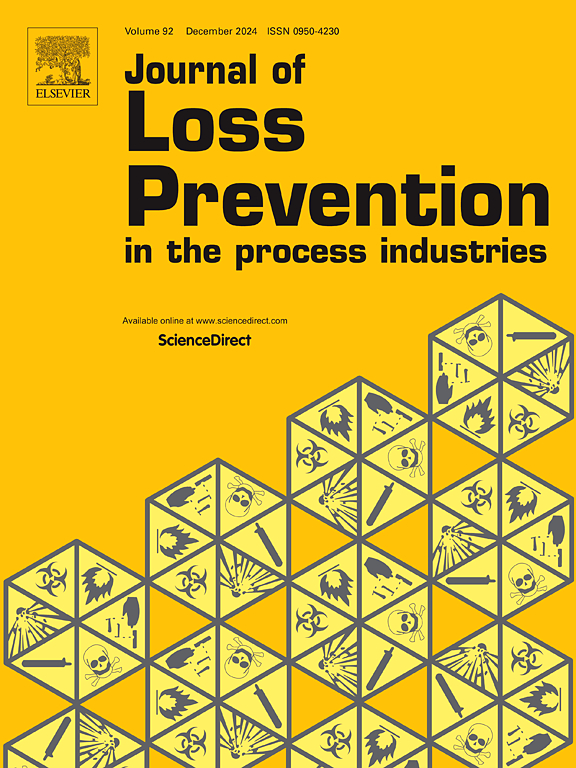Experimental study on the risk of explosion from hydrogen-air mixtures in confined and semi-confined concrete structures
IF 4.2
3区 工程技术
Q2 ENGINEERING, CHEMICAL
Journal of Loss Prevention in The Process Industries
Pub Date : 2025-06-17
DOI:10.1016/j.jlp.2025.105712
引用次数: 0
Abstract
When constructing hydrogen infrastructure in confined or semi-confined spaces, the significance of ventilation systems increases, necessitating measures to mitigate explosion damage. This study experimentally investigated the risk of hydrogen explosions in such spaces and analyzed the effectiveness of explosion venting in reducing internal explosion pressure. The experiments were conducted in concrete structures filled with a hydrogen-air mixture. The results showed that explosion venting substantially reduced internal explosion pressure; the maximum pressure difference between confined and semi-confined conditions was approximately 14.3 times, with significant pressure reduction observed under confined conditions due to the presence of a minimal vent area. In confined spaces, the probability of fatalities from concrete fragments generated by the blast wave, which could scatter up to approximately 80 m from the structure, ranged from 0.065 % to over 99 %, indicating a lethal threat to humans. Conversely, in semi-confined spaces equipped with explosion venting, the maximum external peak overpressure measured was 3.44 kPa, posing no significant harm to humans. These findings confirm that incorporating a minimal explosion vent area in confined or semi-confined spaces can significantly reduce both property and human damage by lowering internal explosion pressures.
密闭和半密闭混凝土结构中氢气-空气混合物爆炸危险性的试验研究
在密闭或半密闭空间建设氢气基础设施时,通风系统的重要性增加,需要采取措施减轻爆炸危害。本研究对此类空间氢气爆炸的危险性进行了实验研究,并分析了爆炸通风降低内部爆炸压力的效果。实验是在充满氢-空气混合物的混凝土结构中进行的。结果表明:爆炸通风大大降低了内爆压力;密闭和半密闭条件下的最大压力差约为14.3倍,由于存在最小的排气面积,在密闭条件下观察到压力显著降低。在密闭空间中,爆炸冲击波产生的混凝土碎片造成死亡的概率从0.065%到99%以上,这些碎片可以散布到距离建筑物约80米的地方,这表明对人类构成致命威胁。相反,在装有爆炸通风的半密闭空间中,测得的最大外部峰值超压为3.44 kPa,对人体无明显危害。这些研究结果证实,在密闭或半密闭空间中加入最小的爆炸通风口可以通过降低内部爆炸压力来显著减少财产和人员损失。
本文章由计算机程序翻译,如有差异,请以英文原文为准。
求助全文
约1分钟内获得全文
求助全文
来源期刊
CiteScore
7.20
自引率
14.30%
发文量
226
审稿时长
52 days
期刊介绍:
The broad scope of the journal is process safety. Process safety is defined as the prevention and mitigation of process-related injuries and damage arising from process incidents involving fire, explosion and toxic release. Such undesired events occur in the process industries during the use, storage, manufacture, handling, and transportation of highly hazardous chemicals.

 求助内容:
求助内容: 应助结果提醒方式:
应助结果提醒方式:


